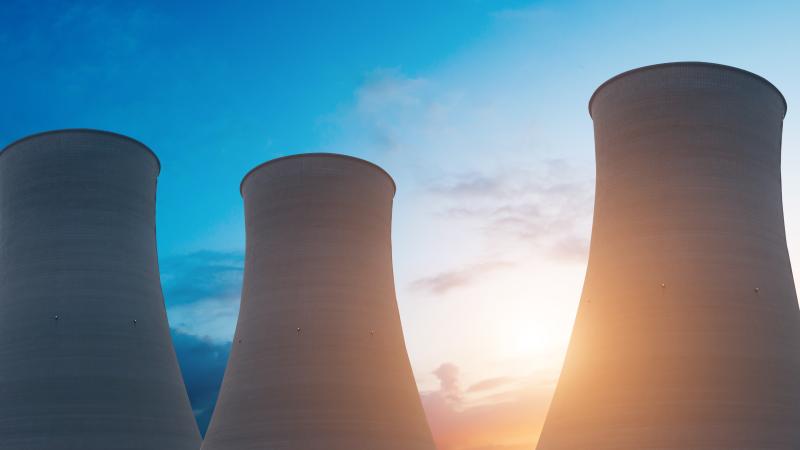$1.2 million in grants support Rensselaer research on nuclear energy technologies
July 13, 2020

TROY, N.Y. - The U.S. Department of Energy recently awarded $65 million in grants to support research that will advance safe, reliable, and clean nuclear energy. Among those projects are two led by Rensselaer Polytechnic Institute, which received a combined total of $1.2 million.
The first is led by Jie Lian, a professor of mechanical, aerospace and nuclear engineering at Rensselaer. It will examine an integral component of a nuclear reactor system, specifically in a lead-cooled fast reactor that uses uranium nitride as fuel. This fuel type possesses ideal properties, like higher stability, thermal conductivity, and fissile element density, but there is little known about the chemical interactions among nitride fuels, liquid metal coolant, and cladding.
In a traditional reactor, a fission reaction happens in nuclear fuel pellets confined within metal cladding tubes. The reaction generates enormous heat energy, which is transferred by water coolant that circulates around the core. The heated water is used to create steam, which, in turn, generates electricity.
Within a new reactor design concept that Lian and his team are studying, liquid metal coolant is used instead of water, providing a more efficient media for heat transfer. The downside, Lian said, is that liquid metal tends to be corrosive at high temperatures, which means that new cladding material must be able to withstand that stress. Uranium nitride fuel must also be compatible with the liquid metal sublayer and cladding.
Fundamental understanding of the chemical interactions and compatibility within this fuel-coolant-cladding system is essential in enabling the design and deployment of a new reactor concept. Lian will collaborate with Oak Ridge National Laboratory and Los Alamos National Laboratory on this project.
“We are trying to understand what happens in this system, to really study the fuel, cladding, and coolant interaction. Otherwise, there’s no way it could be put into use,” Lian said. “The impact is critical.”
The second project receiving DOE support is led by Ravishankar Sundararaman, an assistant professor of materials science and engineering. Sundararaman and his team will focus on foundational knowledge that will be necessary for the implementation of a next-generation reactor design that uses molten salt as coolants and as liquid fuels.
The team will develop computational models that can accurately and efficiently predict critical properties of molten salts of any composition.
“Our models will predict melting points, solubility of fission products, and corrosion in molten salts, so that we may design such materials on supercomputers before they are tested in reactors,” Sundararaman said. What the researchers learn could also apply to molten salt coolants used for solar-thermal energy harvesting and material synthesis in molten salt solvents.
The key advance, Sundararaman said, will be to make highly accurate predictions at a fraction of the computational cost of currently available modeling techniques. This will allow researchers to explore a large number of compositions quickly. He is joined in this project by Lian, Liping Huang, a professor of materials science and engineering, and Yunfeng Shi, an associate professor of materials science and engineering. Huang and Lian will test the team’s new models in the lab.
These projects fall under DOE’s Nuclear Energy University Program, which aims to enable the next generation of nuclear reactor designs. The research is focused on safety, efficiency, and reducing the amount of nuclear waste that is generated.
“RPI is a leader in this area of studying critical interactions and materials behavior under extreme environments,” Lian said. “Without this type of research, all of these opportunities or possibilities would not be realized.”